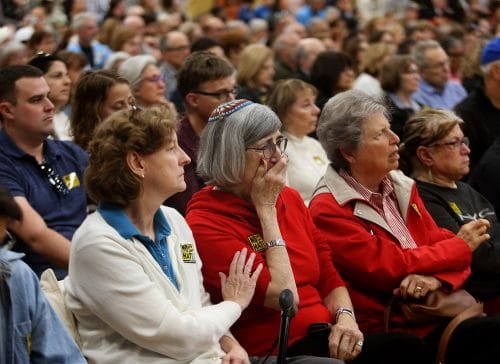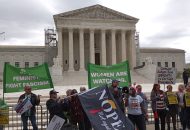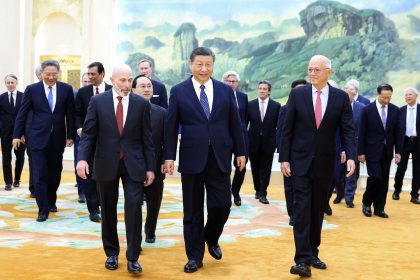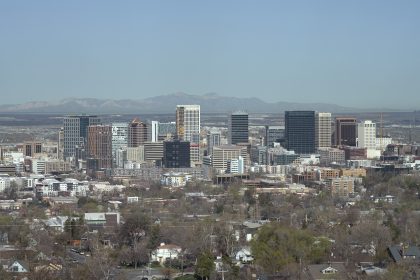Faith Fluency: How the Faithful & the Media Can Effectively Collaborate
COMMENTARY

It is no secret that people around the world are facing unprecedented challenges. And with each global news event, division and disinformation are amplified, risking pushing us further apart from one another.
Challenges, however, provide opportunities, and today we have the chance to consider new approaches to bridging the gaps between us.
One of those least-explored gaps is the chasm between people of religious faith and the representations of their faiths in the media.
According to the Pew Research Center, as of 2010 84% of the world’s population is affiliated with a religion. Many people read this statistic and focus on what it says the world is not.
If you look more deeply, however, this same data uncovers a powerful reality of modern civil society that is often overlooked and underestimated. Beware of assuming we know all there is to know about how people talk about faith in today’s digital world.
In fact, there is some indication that the world is becoming more faith filled. According to Pew, 3 in 10 Americans report stronger personal faith because of the COVID-19 pandemic — a movement that likely stretches beyond America’s borders.
History shows us that global catastrophes often fuel people’s interest in the divine.
But those overwhelming numbers do not necessarily translate into complete, holistic depictions of faith in the news media.
Changing the Focus
According to new research conducted for the Faith & Media Initiative — a recently launched project dedicated to strengthening cross-sector collaboration — over 60% of faith-related media content analyzed stemmed from stories of either controversy or scandal.
The supply chain of content is focused overwhelmingly on a very small part of the story. This suggests that voices and stories are being overlooked or underappreciated. How people express their faith or how faith-based organizations operate in civil society is so much more than instances of controversy.
And yet, our news diets do not provide an opportunity to explore, debate or understand the nuanced role of faith in modern civil society.
Salacious headlines can serve to drive content across any topic — but surely the huge numbers of news consumers who affiliate with a religious faith deserve more than clickbait.
To be clear, this is not the fault of one sector, but the consequence of a digital reality in an era of misinformation and a dizzying change to business models. Nobody is pointing fingers, instead we should be pointing to areas for collaboration.
So What Can Be Done About This Divide?
How do we address the gulf between news consumers of religious faith and media representations of those faiths?
That question laid the foundation for a robust and insightful discussion held Friday, March 4, for the Horasis Extraordinary Meeting.
The conversation — focused on faith and media in modern civil society — included Nicole Bibbins Sedaca, executive vice president for Freedom House; David Morgan, co-founder & president of the Multicultural Media and Correspondents Association; and David W. Miller, director of the Faith & Work Initiative at Princeton University.
I was fortunate to be brought into this conversation. And, as is often the case, I came away feeling like less of a fellow panelist and more of a student at a masterclass. There was a lot to learn.
The group discussed the crucial role filled by the media under increasingly difficult and demanding circumstances.
The role of the press in distilling world events and promoting awareness and understanding is an invaluable part of a civil society based around shared values.
That is why, the panelists agreed, the media need the resources, contacts and access to develop news leads beyond sanitized releases and safe soundbites. Because there are plenty of compelling and inspiring stories that would drive readership and viewership — but the path to developing such leads has historically been a maze more than a main drag.
Of course, this challenge also runs deeper than numbers.
For most people, even for those who view their lives through the lens of faith, the world feels hard.
Every day brings new examples of polarization — from protests over COVID-19 protocols, to finger-pointing politics, to surprising geopolitical realignments. From our workplaces to the world stage, it feels as if we are mired in conflict.
“The whole foundation of religious freedom upon which our country was founded is built on the importance of protecting the space for different groups with whom we don’t agree in order for our space to also be protected.”— Freedom House Executive Vice President Nicole Bibbins Sedaca
Trust at the Core of the Matter
Like with most complicated arrangements, trust remains at the core of the matter.
Generally, the media does not trust faith-based organizations to be transparent. Faith-based organizations do not trust that the media will report related stories in nuanced, unbiased ways. And, according to the 2021 Edelman Trust Barometer, only 53% of people worldwide trust traditional media (for Americans, that number scrapes rock bottom at 27%).
Miller suggested the lack of trust is a residual effect of “a certain smugness, a certain ‘I got it all figured out. I’m right, and you’re wrong.’ Conversations like these can help people get past this smugness and become curious about the other.”
Morgan outlined an additional part of the challenge, noting, “There is a need to eliminate the blind spot that has kept the faith community and BIPOC media from viewing and engaging with each other as aligned and integral parts of the civic infrastructure underpinning underserved communities. A stronger communication, engagement and resource sharing relationship would greatly advance their overlapping social missions and community service efforts. If there’s ever a time for us to be pushing this conversation and eliminating that blind spot, it’s really now.”
Now is the right moment to begin building bridges between the media and faith communities. These sectors are not competitors, they are running mates and their futures are linked to each other. A bidirectional, multifaceted initiative will replace fear and reluctance with confidence and conviction on both sides.
As the world settles into its next version of normal — full of both contention and possibility, of both suspicion and a widespread interest in finding new ways to work together — it was clear from this discussion that the frayed relationship between media and faith must be mended.
A genuine effort at better understanding will not only be beneficial for both sectors. Such an opportunity will provide a boost to our civil society (a boost that is desperately needed) with a resilient new perspective on the world that can shorten the distance and differences between us, and strengthen the connections between us.
There has never been a more urgent time to discuss a better relationship between the faithful and the media. Our daily misinformation diets are turning on us and we can’t afford to let it poison the relationship between something that is so core to so many societies in important ways.
The conversation has started. Let’s keep it going. Because the risks of misunderstanding or division are too high.
They are playing out in headlines and homelands. A robust public discussion of how faith and media play into the realities of our civil society may just be one way we can ensure that civility makes its way back into civil society.
The moment to prioritize and invest in faith fluency is here.
Aaron Sherinian serves as senior vice president for Global Reach at the Deseret Management Corporation. An advocate for freedom of the press, freedom of religion and civil society engagement, he is part of the exploratory task force for the Faith & Media Initiative. You can join him in this conversation on LinkedIn or on Twitter @ASherinian.























